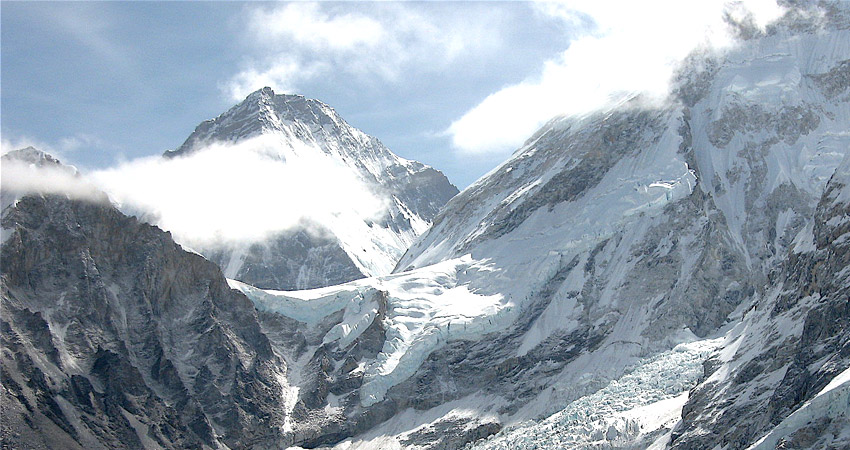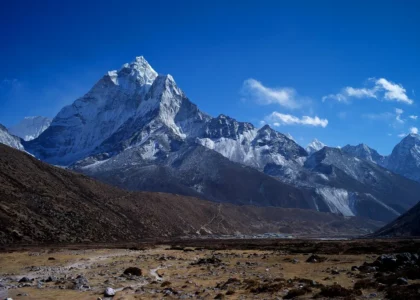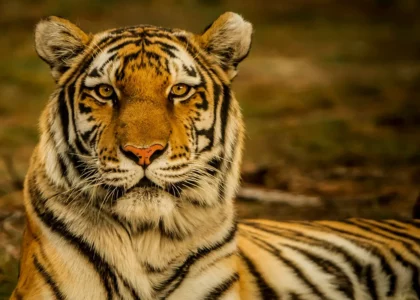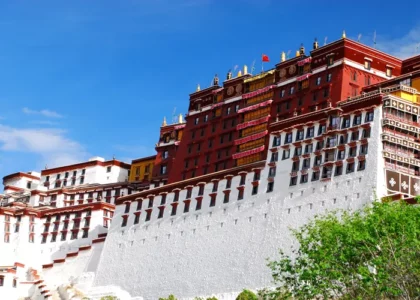Kala Patthar Trek , Hiking to World’s best Mountain view point

Kala Patthar is located on the south range of Mt. Pumori above Gorakshep in the Himalayas in Nepal. Kalapatthar is also referred to as “black rock” in Nepali. Although it’s an optional component of the EBC journey to the Kala Patthar Summit, the Kala Patthar Trek is the most well-known for its panoramas of Everest and several other mountains.
The sunrise views of Everest are magnificent from that location. However, there are difficulties, such as altitude sickness. Although the altitude makes hiking difficult, the path from Gorakshep starts a little steep before leveling off. A ridge break just before the Kala Patthar trek summit provides a view of Nirekhi Peak, Chumbu, and Khangri. The peak of Kala Patthar, at 5643m, is reached by ascending the last wind-swept stairs.
The Khumbu Glacier, Pumori, Everest Base Camp, Everest, Ama Dablam, Thamserku, Kangtega, and Taboche are all visible in the panorama from the Kala Patthar Summit. Similarly, Kala Patthar offers breathtaking views of the summits of Nuptse and Changtse and glimmers of Lhotse’s northern edge summit and peak.
Kala Patthar Trek: Itinerary Information and Facts
Trail name: Kala Patthar trek
Highest elevation: 5545m/18192ft
Starting/Ending point: Kathmandu (1350m/4429ft) to Kala Patthar elevation
Trekking begins/ends: At Gorekshep-5125m/16814ft (the last lodging place before ascending to Everest Base Camp/Kala Patthar)
Hiking Distance: 3.7 kilometers (2.3 miles round trip from and to Gorakshep).
Elevation Gain: 420m/1377ft
Duration: 2-3 Hours
Kala Patthar Trek Summit: A Complete Hiking Route Guide
Kala Patthar trek summit starts from Gorakshep (5,164 m or 16,942 ft), the original base camp for Mt. Everest. The hike climbs after a brief descent to an old lake surface that currently has a small lake and a helipad.
Moreover, a route of steep switchbacks is followed by a slight leveling out as the route makes its way to the mountain’s eastern side. The road becomes difficult once again when it reaches the wind-whipped summit ridge. One must then struggle over stones for five to ten minutes to get the Summit designated by prayer flags.
Near the peak is a geocache trackable named Kala Patthar Yeti, connected with a trackable code of GS9EBG. Typically, the entire journey to Kala Patthar takes 1.5 to 2 hours. An extra two to three hours (one way) is needed if Lobuche makes the effort.
[contact-form-7 id=”4615″ title=”inside”]
Kala Patthar Trek: Sunrise or Sunset View
Many hikers prefer to witness the sun rise over the setting sun since the Kala Patthar trek is often a sunrise hike. The weather is also not ideal in the afternoon since it will be pretty windy, and clouds will cover the mountain ranges. Thus, most agencies plan for the early-morning trip to see the sunrise. Most of the time, the weather is favorable in the morning, and the mountains are visible.
On the eighth day of their walk, they typically go from Lobuche to Gorakshep in the morning before continuing to Everest Base Camp in the late afternoon. On the ninth day, there will be an early ascent to Kala Patthar to see the beautiful sunrise and a return walk to Pheriche in the late afternoon.
Nevertheless, you must leave your lodging at 3 a.m. Turn on your flashlight and proceed up a hill in complete darkness. You will see the magnificent sun rising from the Everest summit as it emerges from behind the mountain, bouncing across the mountain’s other side.
Many travel here, particularly for the sunrise and a close-up view of Everest. If you are not climbing Everest, this is the best opportunity to see it from so close up to Kala Patthar.
In addition, you get to see a lot of breathtaking peaks. Ama DablamP, Pumori, and the entire range are bathed in light as the sun rises.
On the other hand, it is advised to Kala Patthar trek summit for sunset if the weather is good and the prediction does not call for clouds on the eighth day. You will be able to see the sun’s final rays as they pass over the enormous Himalayas, which will glow brightly as they do. The Alpenglow effect is a well-known name for it.
One of the most unforgettable experiences of a lifetime is watching the entire mountain range glow in the sky in colors like yellow, orange, and red.
Kala Patthar Trek: Weather Guide
Hiking is possible throughout the year in Nepal, but visiting during the ideal climbing seasons is recommended: spring and autumn. Every month has a unique personality. While spring lasts from March to May, autumn lasts from September to November. These two seasons provide easy travel to almost all of Nepal. Similarly, we advise you to visit during the spring and autumn, when the weather is fantastic.
This Kala Patthar trek is best done in the spring. You will pass through a rhododendron forest and see the stunning Mongolian flowers bloom. If you’re lucky, you could even see some of the Himalayas’ uncommon creatures and birds.
Similarly, autumn is advised due to the excellent weather and festival season. During this period, you can explore Nepalese culture extensively.
However, please avoid the winter (December to February) and rainy seasons (June to August). Trekking during the rainy season increases the risk of accidents like tripping and slipping since the rain makes the terrain slick. Landslides, floods, leach biting, and inability to attend a flight are potential problems.
The heavy snowfall in winter is another unfavorable season. One cannot endure the extreme cold caused by heavy snow. Also, higher altitudes may make it challenging to locate lodging and food because tea houses and lodges are rarely open during the winter.
Kala Patthar Trek: Cost
If you have a question like, “Will it cost more?” Do we have to pay more to reach the top of the Kala Patthar summit?
No, is the answer. The Kala Patthar summit walk requires no additional services, food, or lodging. Hence, it does not require extra cost. As we’ve already said, Kala Patthar is an optional trekking route after the EBC summit. If you are in good condition and have the stamina to go up, you must go to this location, a 2- to 3-hour hike from Ghorak Shep. If not, there’s no need to exert any more effort.
Kala Patthar trek: Difficulties and problems
Many hikers could not ascend the Kala Patthar trek for various reasons, such as mountain sickness. You may have multiple symptoms at such a high altitude, including severe physical tiredness that makes walking difficult. Your body will ache, and you’ll also experience an intense cold. There are times when you’ll feel sleepy. Altitude sickness may be shared when the oxygen level is low around Gorak Shep.
Additionally, you must be ready emotionally and physically. A view of snow-capped peaks tells us the journey will be more challenging. One’s physical and mental endurance will be gradually tested at the start of an expedition. You won’t experience much trouble if you are well-acclimatized and take it gently, but you must rest often as you ascend. If you are not properly acclimated, you will find it a painful journey that will leave you exhausted and breathless. The mental challenge also increases because reaching Kala Patthar’s Summit takes some time.
Precaution and care
It is best to be ready before starting the Kala Patthar trek to prevent these issues. Engage in physical activity like jogging and running. Eat healthy food at the beginning of your journey. Furthermore, remember to hydrate well—at least 3 liters—while ascending. Water consumption is crucial to keeping your body hydrated. Likewise, you can take medications like Diamox to stay hydrated and avoid altitude sickness.
It is best to include the necessary first aid supplies to utilize them when required. Remember to dress warmly, as temperatures can drop dramatically in the wind at the peak. Due to the great height of Kala Patthar, frigid winds frequently blow, making the air even colder. It would help if you took precautions to be safe. Wear additional layers of clothing since you might want to stay up there longer to take it all in. Trekking shoes are strongly recommended.
Kala Patthar Trek: Packing List and Gear Requirements
You might consider bringing a headlamp because you will trek on dark paths. It may get cold at the peak, especially when you stop moving and rest still. We did want to make a few basic observations regarding the climb to the Kala Patthar Trek Summit. We made a thorough packing list for Everest Base Camp, listing everything we would need on the hike.
This is a detailed list of items to bring to Everest Base Camp from the Kala Patthar trek summit. It comprises the clothing layers you should pack to stay warm throughout the Himalayan region’s climatic variations. Similar equipment and supplies are needed to make your walk pleasant and convenient so you may have the most incredible experience possible.
Getting all your gear and necessities from Kathmandu is best because it is an excellent location for great deals.
Clothing
Trekking pants
A waterproof jacket with a hood
Waterproof pants
Warm thermal socks
Hiking boots with ankle support
Warm gloves
Sunglasses
Wool hat or balaclava (with covered ears)
Warm thermal sweatshirt
Moisture-wicking long-sleeve t-shirts
Camp/trekking shoes
Trekking Gears
Headlamp with extra batteries.
Trekking poles
Hand warmers
The camera with extra batteries and memory cards
Daypack waterproof cover
Water bottles or hydration bladders
Others
Sunscreen
Lip balm with SPF
Diamox (for altitude sickness)
Kala Patthar trek: Guide or Potters
Anything extreme or challenging during a trip may happen at any moment or location. You may become lost, ill, stumble, or unconscious. It could be not easy to confront and manage this sort of circumstance. It is practically impossible, especially in regions with high elevations and extreme colds like the EBC and Kala Patthar trek.
Therefore, having an experienced guide on your trek who knows the dos and don’ts is essential in these situations. Consequently, it is advised to use local sherpas for the entirety of the journey. Without a map, they will provide you with much helpful information and the correct directions to the elevation.
Hiring potters is optional, as one has to carry one’s backpack. However, if you have heavy backpacks with several items in them, such as cameras, videography equipment, and other heavy personal items, you must hire the potters who are accessible there.
Kala Patthar Trek: Accommodation and Food
At Gorak Shep, there are excellent lodges where you may stay. The lodges are constructed of wood and stone. Meanwhile, most lodges are a bit cold and without an attached restroom. Nonetheless, you cannot expect more facilities at a high altitude. However, some residents put much effort into building facilities and opportunities like lodges, delicious meals, secure environments, and friendly service.
You will likely receive tea, local food (dal, bhat, and tarkari), and Thukpa. The journey will seem alright because you will have access to delicious meals and coffee shops. Due to its location, you won’t have access to as many meal options as you would in places like Namche, Lukla, and other trail areas.
Itinerary: Kala Patthar Trek information
Day 1: Fly to Lukla and trek to Phakding (2,652m) 3/4hour
From Kathmandu, you will take a domestic flight to Lukla. Due to unfavorable wind conditions in the afternoon, flights to Lukla depart early in the morning. About 35 minutes pass throughout each flight. From the window, you may take in the gradual transition from Kathmandu Valley’s urban environment to higher and higher mountains as you move eastward. When the sky is clear, many mountains can be seen in the north and the lowlands below.
Your journey starts when you leave the plane at Lukla and hike down Dudh Koshi’s bank to Phakding. You will pass through a rhododendron forest and take in the pungent aroma of green pine.
Day 2: Phakding trek to Namche Bazaar (3,500m) 4 to 6 hours
The second day takes you from Phakding to the Namche bazaar as the route becomes more vertical and the height increases. You’ll spend the night in Namche Bazaar on your trip to Tibet. People from the Solukhumbu area and its surroundings converge here to do business. You may connect with friends, family, and dear ones due to the availability of stores, dining options, hotels, a bank, and internet services.
Day 3: Namche acclimatization day- Ride to Everest View Hotel (3,880m) and Khumjung (3,790m).
You can use your spare time to unwind, get used to the altitude, and explore Namche. You can also have a lovely morning from the Sagarmatha National Park while enjoying the majestic views of Mount Everest, Thamserku, AmaDablam, and other magnificent peaks.
Day 4: Namche trek to Tengboche (3,985m) for 5 to 6 hours.
On the Everest expedition trial, the day-four journey begins with a meandering, pleasant route that takes you upward. The prosecution offers stunning views of Mount Everest (8,848 m), Thamserku (6,618 m), and AmaDablam Peak, which stands at 6,856 m on Mount Everest’s east edge. The walk takes you to Tengboche, which is noted for its Buddhist monastery and several large gumbas.
Day 5: Tengboche trek to Dingboche (4,110m)
The Sherpa’s initial settlement in the Khumbu region was Tengboche. Paying the lama will guarantee you can view some Yeti relics, and the monastery is well worth a visit. Beyond Tengboche, you could feel the elevation shift, which might affect you. The route then ascends through several recognizable Mani stones before descending to Dingboche, crossing the ImjaKhola.
Day 7: Dingboche trek to Lobuche / Pyramid (5,050m)
Due to the terrain and altitude, few routes go to Lobuche. Along the trip, the road will be covered in snow. You may take a breathtaking panoramic view of the enormous Mt. Everest and the nearby Himalayas from this elevated vantage point.
Day 8: Pyramid trek to Gorakshep (5,164) to EBC (5,364), night stay at Gorakshep
On day 8, you’re going to Gorakshep. The trail offers views of the Highlands, the Snow River, and the Khumbu Glacier. The blessings from Mt. Everest will follow you to Gorakshep. After eating at Gorakshep, you will enjoy the sunset at the Kala Pathar. No words adequately convey the stunning sunset sight that will astound and silence you.
[contact-form-7 id=”4615″ title=”inside”]
Day 9: Goraksep trek to Kala Patthar (5,643m) and descend to Namche Bazaar (3,500m)
Early in the morning, climb to Kala Patthar to witness the sunrise. The mountains that can be viewed from Kala Pathar include Mt. Everest, Mt. Pumori, AmaDablam, Lingtren, Khumbetse, Thamserku, Lhotse, and Nuptse, among many other smaller peaks. Once you’ve descended, eat breakfast and return to Dingboche (4400 m).
Day 10: Namche trek back to Lukla (2,860m)
The hike for this program ends on day 10. You’ll travel the path that descends to and crosses the Dudh Koshi. The route continues via the picturesque village of Chumoa and along the river till Phakding, where it swings left toward Lukla.
Removing the distant snowy peaks indicates the end of the most challenging section of the journey and the end of an exciting and breathtaking adventure that has pushed one’s limits. You will now descend the Dudh Koshi while hiking through a lush rhododendron forest with a powerful evergreen oak aroma.
Last Day: Fly Lukla to Kathmandu (1,338 m)
After breakfast, take an early-morning flight to Kathmandu so you may leave the Everest area. The flight time may differ slightly depending on the weather. When your plane lands in Kathmandu, a representative from our company will meet you there and drive you to your lodging in a private vehicle.
Things to remember: If everything goes according to plan, the itinerary mentioned above will be finished on the specified day, 11 days. However, the erratic weather and altitude path are always uncertain. During the trek, the weather might cause problems, such as heavy rain, snow, clouds, and wind. A flight cancellation or delay may arise because the flight cannot proceed. Therefore, you are advised to bring some extra money, time, and days.
Kala Patthar: Helicopter Tour
One of the easiest ways to get so close to the majestic peaks of the Himalayas is on an Everest Helicopter Tour in Nepal. The helicopter trip is unquestionably the best way to experience mountains almost at your fingertips. It is perfect for those who wish to experience the Himalayas but have limited time. But, if you want a luxurious, exciting experience, it is beautiful for everyone else.
Most notably, you may take several Himalayan helicopter tours to see the size of Nepal’s Himalayas, including the Everest, Langtang, and Annapurna helicopter tours. A lifetime’s worth of memories is made by visiting the glistening snow-capped peaks, lush green valleys, and spectacular views of the barren landscape.
Depending on the customers’ needs, Above the Himalayan Trekking provides helicopter trips to any of these locations. We provide solo, family, group, and other types of tours.
Above the Himalayas, trekking visitors may enjoy a stunning panoramic helicopter flight up the Khumbu Valley and around Mount Everest. It is a genuinely memorable experience to view the morphology of the terrain and the magnificent high Himalayan peaks from a viewpoint at a great height. In appearance order:
A helicopter takes flight
Dudh Koshi, the world’s tallest river
Lobuche, Pumori, Khumbu Glacier
Cho Oyu
Ridgeline into China
Lobuche Glacier
Kala Patthar
Khumbu Icefall
Mt. Everest, Lhotse, Nuptse
Kala Patthar trek : Detail Heli tour guide
You may depart from Lukla to Kalapathar via helicopter. The flight will take around 3 hours. You will witness numerous picturesque villages as you go through several hills and various mountain ranges. You will be able to see the Everest region’s high Himalayas. When you fly over the same valley as Lukla, you will be thrilled to view even more incredible and higher mountains, such as Thamserkhu and others. You’ll pass Namche and its lovely surroundings.
You once again flew above the villages of Khumjung and Kunde to reach Mount Everest. You’ll see mountains along the way, including Mt. Pumori (7161 m), Lobuche Peak (6119 m), and Mt. Choyu (8188 m). Every season’s geographic location is fascinating in and of itself. A flight above the Khumbu glacier toward the Everest base camp while viewing the Pumori mountain range and Lobuche town will be a fantastic experience.
You will turn around and head back toward Kalapathar with a glimpse of the Khumbu iceberg after almost reaching the Everest climber’s base camp. You may land at either Everest Base Camp (5365 m) or Kalapathar (5400 m), but Kalapathar is always a superior choice for views.
You will arrive at Kalapathaar and be greeted with a fantastic mountain panorama. It will be challenging to stand in a Kalapather with low oxygen levels, so you will thus spend a short time there. You will be able to see Mount Everest and other things shortly. Then, you will return to Kalapathar, where a helicopter trip is one of the best ways to get close to the majestic Himalayan peaks.
You also have the choice of a heli-ride that descends. For example, you can reserve a helicopter if you need to go over short distances by helicopter. Or if you need to drop if you don’t want to spend four days walking back down after finishing the Everest Base Camp Trek.
[contact-form-7 id=”4615″ title=”inside”]
FAQs
Why visit Kala Patthar?
You could glimpse the Everest summit, something others could not do. The location offers a breathtaking view of Mount Everest and the surrounding mountains.
Visiting is worthwhile even if it requires an optional trip from Everest base camp. Many hikers could not reach the top and left it because of a lack of oxygen.
Of course, the ascent was difficult, but once you arrived and waited for the sun to rise, which rises directly behind Mount Everest, everything turned golden. As a result, you wished to live there forever.
How challenging is a trek to Kala Patthar?
Although the trek is short, it is upward and at a high altitude. An average hiker should need between 2-3 hours to reach the viewpoint of Kalapatthar.
The route becomes more challenging to navigate and rockier as you ascend higher. Be careful not to slip or fall during these sections, as you don’t want to get injured while climbing or descending the hillside.
What is the altitude of Kala Patthar?
The elevation of Kala Patthar is 5,644 meters (18,176 ft).
How long does it take to climb Kala Patthar from Everest Base Camp?
From Ghorak Shep, the Kala Patthar summit walk takes roughly 2–3 hours. Most tours typically complete the trip early in the morning before descending to Lukla.
Can you see Mt. Everest from the Kala Patthar summit?
Kala Patthar is one of the most incredible places in Sagarmatha National Park to see Mount Everest. If you want a clear, up-close view of Mount Everest, Kala Patthar is the place to go. There is more to Kala Patthar (5,644 meters) than a sight.
You will also see other well-known mountains, like Nuptse, Changtse, Ama Dablam, Everest-West Schulter, and Pumori.
How to reach Kala Patthar summit?
There are two ways to get to Kala Patthar: by helicopter or on foot from Gorakhshep. However, due to the area’s rugged and mountainous terrain, aircraft cannot land on the trek.
Conclusion
This page is about Everest Base Camp routes involving a trek to the Kala Patthar summit for sunrise on day 9. But if the weather is fine, I’d advise going to Kala Patthar in the late afternoon on Day 8 to catch the sunset.
Before leaving, buy a travel insurance plan for your Himalayan trekking adventure. It includes emergency medical coverage for high-altitude activities like hiking in the Himalayas and standard coverage for airline delays, lost baggage, and trip cancellations. Travel insurance is essential for many facets of a journey and is especially important if you want to hike in Nepal.
The trek to the Kala Patthar summit will be thrilling and challenging. However, all of your difficulties will disappear as soon as you get to the viewpoint and see the lovely sunrise with your own two eyes. It will feel fantastic and surreal. You will see the sky as it glows bright pink and red like the sunrise for an extended period. Additionally, the mountain around you lit up in a magnificent morning mini-avalanche going down.
It would help if you took the trek to Kala Patthar summit to experience this momentous morning, which you will never forget since you will also feel on top of the world. Kala Patthar is a better location to visit if you want a more profound and precise picture of Mount Everest. Despite some challenges, the area provides an incredible moment in its most beautiful scenery. When you travel to the Everest region, you must visit these spots to experience the splendor of the Himalayas.
Best Price Guaranteed, Easy to change Date, Instant Confirmation
Book This Trip Have Questions?
Have Questions?Talk to Expert
Meet Mr. Purushotam Timalsena (Puru), Nepal's best trek and tour organizer, who has been working in the Himalayas for more than 24 years.
WhatsApp/Viber +977 98510 95 800











